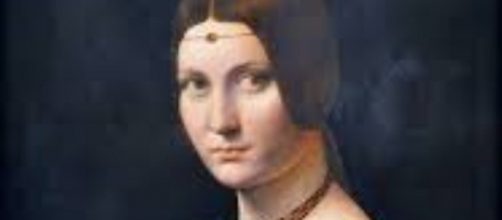ABC News reported on Nov. 7 that the Louvre Abu Dhabi debuts on Nov. 11 and one of the 620 works featured - "Portrait of a Woman “ – is touted as an original Da Vinci although attribution has been an issue for decades. The painting is now considered a copy. But the truth of the matter was in evidence all the while (More about that in a moment).
Take a look
In 2010, the New York Times reported that “Portrait of a Woman” had been debated since the 1920s. At first, experts saw the painting as genuine – as a second version of the Da Vinci work held by the Louvre in Paris of Lucretzia Crevelli, mistress to the Duke of Milan.
But British art dealer Joseph Duveen, who held sway over the art world at the time, judged it a fake - sight unseen! His opinion didn’t end the controversy, however. The owners of the painting sued him.
True or false
The owners, a Kansas car salesman and his French wife, received the portrait as a wedding gift from her godmother. But when they tried to sell it to the Kansas City Art Institute, Duveen quashed the deal. Their lawsuit ended up in New York Supreme Court in 1928. The trial ended with a hung jury and the case was settled out of court when Duveen paid the couple $60,000 in damages.
Seeing is believing
Then in 2009, the couple’s daughter asked the Getty museum to look at the portrait and the curator of paintings, Scott J .Schaefer, classed it a “skillful interpretation.” Other doubters made the point that while the portrait in the Louvre was painted on panel, the one at Louvre Abu Dhabi is on canvas, which didn’t come into general use until the 17th century.
Still, you don’t need to know that to understand why “Portrait of a Woman” is a copy. .
A question for the ages
The clue lies in Da Vinci’s way of making a painting. He had a habit of not finishing things and when he did, it took him a long time - 12 years to complete “Mona Lisa.” That habit has been known since the Renaissance when Giorgio Vasari, the historian back then, revealed the fact and noted several examples.
He said that Da Vinci started many things without finishing “because he was convinced that his hands, for all their skill, couldn’t ever perfectly express the subject as well as the idea in his imagination.” When painting “The Last Supper,” he deliberately left the head of Jesus unfinished because he worried he’d fail to create the necessary divine spirit.
All that said, how can anyone think this artist could paint two versions of a painting when he had so much trouble completing even one. It’s hard to understand why the art world experts forgot Da Vinci’s limited output for nearly 100 years. I can’t be the only one who remembered, can I?


